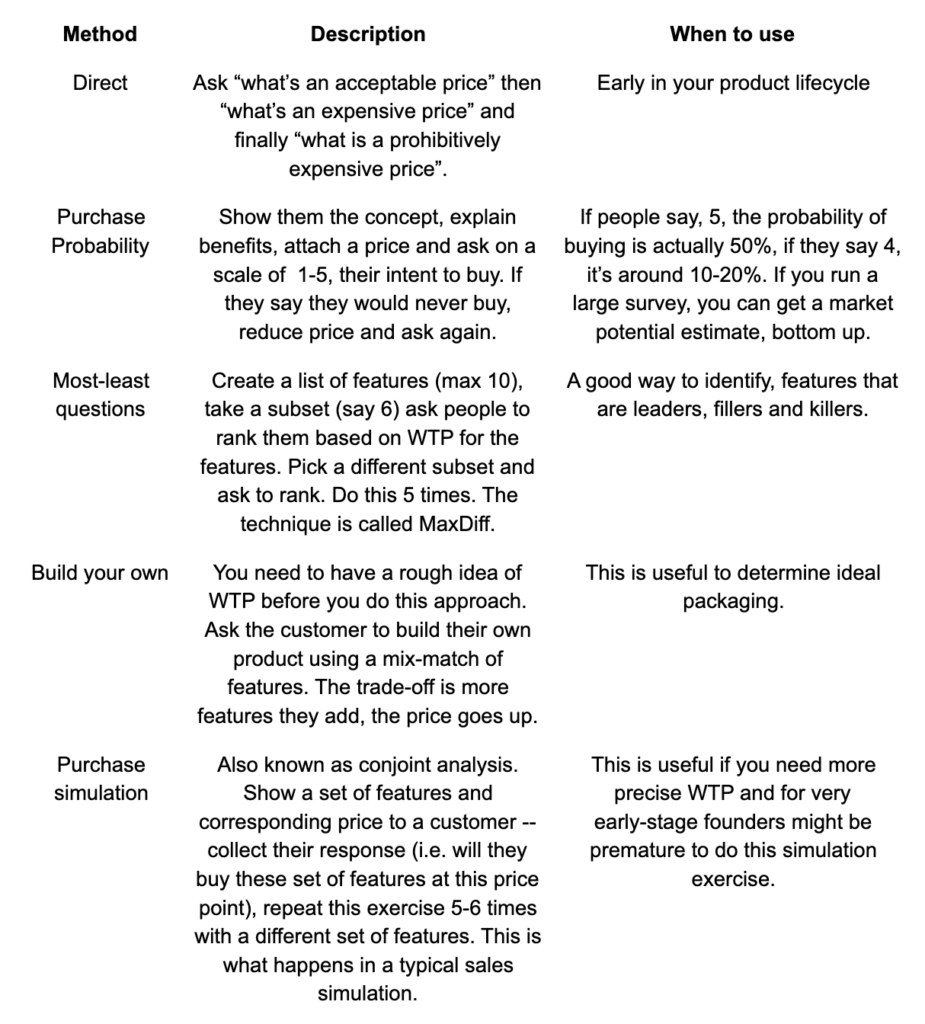Early Stage product development is hard. Over the years, I have collected a few techniques that helped me navigate the infinite search space and prune it down to a tractable one. Most of these techniques apply for enterprise product management.
Category Creation
One question that is handy to think about is the following → What category are you operating in? (E.g investors often ask founders is -> Are you in an existing category or is a new category is being created?) Why is this question relevant early on in the company/product creation lifecycle → because typically you MVP (minimum viable product) if it’s a new category and you build for 2 years if it’s an existing category (e.g as the founders of Zoom did). This question also forces the founders to understand the history of the category (e.g. several attempts in the past might have been made to solve a problem in that category, what happened to those companies/products). Understanding the history of a category requires customer development, which brings me to the second technique.
Customer Development
This is a key piece that founders should not take shortcuts (especially if you don’t come from the industry/domain). LinkedIn is your friend but you need to know how to craft a LinkedIn message that customers appreciate and respond to. Here’s a suggested structure for sending emails on LinkedIn with regards to customer development.
Checklist:
Subject: Research//Reference//Share Insight//Request
Research: An opening that shows you have done your homework and that this is not a COLD call.
Reference: Refer to other clients/people you talked to that have had a similar experience and what they did. Human beings value social proof a lot.
Share Insight: Offer value, such as a link to some blog or white paper.
Request: Offer to share more insights and ask for a meeting or a phone conversation.
Best Practices:
Keep it short. Half as long, twice as powerful.
Make use of the subject. First 30-40 characters will show up on their mobile phone.
In reference talk about benefits, not features.
Close w/ a mutual social connection (e.g from the same school)
Do not start w/ “I” or immediately start selling.
WTP (willingness to pay) talk
I firmly believe that most startups die of indigestion, not starvation. In other words, they take on too many things to do. WTP is a useful framework to help teams focus and prioritize. However, whenever you talk to prospective customers, you need to position it as a “value talk”. i.e “we want to talk about the latest innovative ideas and how we can add value for you” rather than “ if we build this how much will you pay”. Here is a summary of a few ways you can approach this.

Net-net, have the WTP talk with prospective customers early on.
Communicating the value proposition
When you are having the customer development calls, communicating your value proposition as clearly and succinctly as possible is imperative. This is not about describing features. Features belong to the product. Benefits belong to customers. Communicate benefits not features. If you are not sure how to phrase the benefits, ask the customers, how they measure their performance. Use the MOCA matrix to refine this.

Is there a Compelling Event?
When selling to enterprise buyers, another useful tool that I have found is the notion of “Compelling Event”, which can be defined as — “a customer pain point to be solved by a certain date or something bad happens”. Typically a compelling event is less than 15 words, time-based, and has a consequence for the customer if no action happens (in other words, the status quo is not sufficient).
One-size-fits-all don’t work
Build segments based on customer’s WTP. Don’t design for the average customer. Don’t try to serve every customer. Try to describe your segment as precisely as possible (imagine you are writing a TV ad commercial). Figure out how to configure the product from the get-go so you can serve different segments, over a period of time. Establish features as leaders (must-have) /fillers (nice-to-have) /killers (deal-breakers). Use the WTP table above to figure this out. The other dimension of this puzzle is to structure your offerings into “good/better/best” options. For additional reading on this see [4].
In the end, what matters is people that are behind the product and execution and can they be trusted to deliver. One definition of trust is —> “actions over time”. People build trust by observing your actions over time.
Additional Reading
[1] Tips for Crafting Linkedin Outreach
[2] Pricing 101
